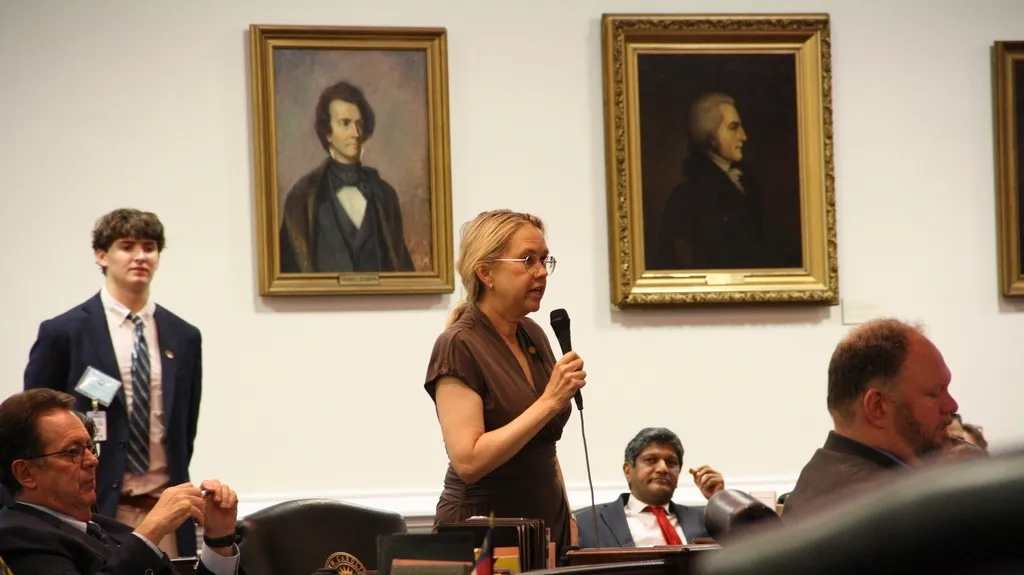May 31, 2013
AIDS in New York: The First Five Years
Winnie McCroy READ TIME: 4 MIN.
From the first rumors of the "gay plague" in 1981, to the ensuing period of intense activism, clinical research and political struggle, the New-York Historical Society catalogues the early history of the AIDS epidemic in New York in "AIDS in New York: The First Five Years," on view from Jun. 7 through Sept. 15.
The exhibit tells the story of these early days via a wealth of materials drawn from New-York Historical's archives as well as those of the New York Public Library, New York University and the National Archive of LGBT History. Among these resources are clinicians' notes, journal entries, diaries, letters, audio and video clips, posters, photographs, pamphlets and newspapers that revisit the impact of the epidemic on personal lives and public culture.
Expect to see everything from "safe sex" recommendations and notices of bathhouse closing, to organizing posters for marches that would spawn the AIDS activism movement and founding of groups like the Gay Men's Health Crisis, ACT-UP in 1986, and amfAR.
"The trajectory of HIV/AIDS changed paradigms in medicine, society, politics, and culture in ways that are still being felt, and the disease remains with us, affecting some 100,000 New Yorkers and more than one million Americans today," said Curator Jean S. Ashton in a statement. "This exhibition explores a history that we continue to live."
Medical info is also on hand, including virologist Jean-Claude Chermann's early slides of the retrovirus that would come to be known as the Human Immunodeficiency Virus.
And the exhibit makes room for art, as well, with posters focusing on Larry Kramer's landmark call to action, "The Normal Heart," panels from the AIDS quilt and notices of the highly publicized illness and death of Hollywood icon Rock Hudson in October 1985.
The period of sexual freedom and liberation that followed the 1969 Stonewall Riots was squelched a decade later by reports of young, healthy men falling ill to diseases usually only found in the elderly. Reports from the ailing and their caretakers are cheek by jowl with a copy of the infamous "Mortality and Morbidity Weekly Report" that first mentioned the disease, then called GRID.
For those who lost partners and friends to HIV/AIDS during that period, the grief, fear and mystery will never be forgotten. But many others were not there for the panic and sadness of the years between 1981-1985, when friends were rapidly getting sick and dying, and nothing could be -- or was -- done.
The World Science Festival has partnered with the New-York Historical Society for a series of talks with headlining experts, who will examine the challenges ahead from a scientific, social and political perspective. Among the scheduled speakers are Dr. David Baltimore, a Nobel laureate searching for an HIV vaccine and cure, and nationally renowned AIDS activist Peter Staley, plus other pioneers in the field.
Lectures are also planned, with major public figures on hand to discuss issues around HIV/AIDS today, to be held as part of the Bryant Park Reading Room Series.
Also opening June 7 is a companion exhibition, "Children With AIDS: 1990-2000," and featuring twenty black-and-white photographs by Claire Yaffa, from her collection, "The Changing Face of Children With AIDS." This heartbreaking exhibit tells the stories of children living with HIV/AIDS, as taken by Yaffa over a ten-year period.
"AIDS in New York: The First Five Years," runs through Sept. 15 at the New-York Historical Society, 170 Central Park West at Richard Gilder Way (77th Street) in New York. For information, call 212-873-3400 or visit http://www.nyhistory.org
Winnie McCroy is the Women on the EDGE Editor, HIV/Health Editor, and Assistant Entertainment Editor for EDGE Media Network, handling all women's news, HIV health stories and theater reviews throughout the U.S. She has contributed to other publications, including The Village Voice, Gay City News, Chelsea Now and The Advocate, and lives in Brooklyn, New York.







